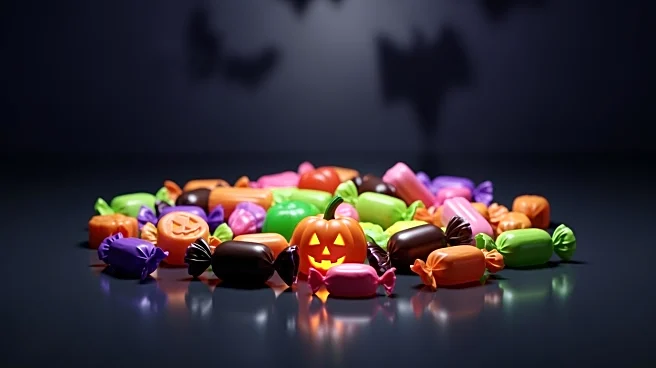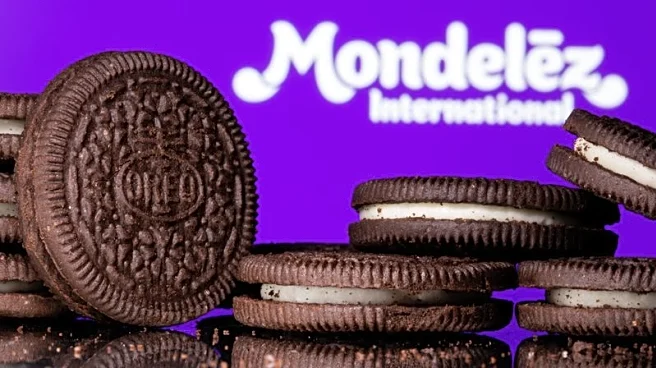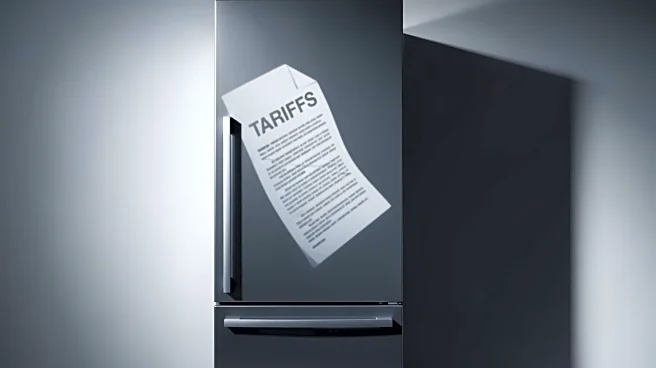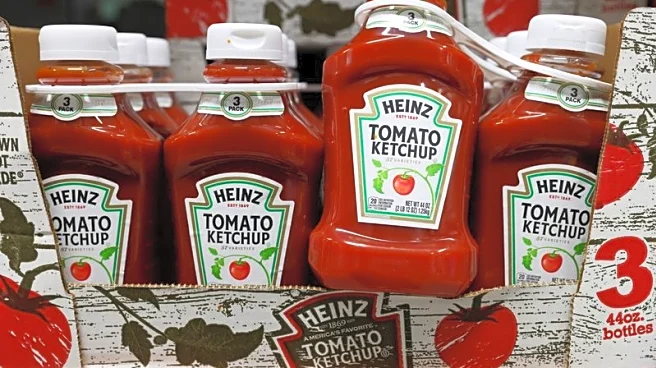What's Happening?
Halloween candy sales in the U.S. are seeing a shift from chocolate to non-chocolate varieties, influenced by rising cocoa prices. Global cocoa prices have more than quadrupled between January 2023 and January 2025 due to poor harvests in West Africa,
which produces 70% of the world's cocoa. As a result, chocolate candy has become more expensive, averaging $8.02 per pound, compared to $5.77 per pound for non-chocolate candy. This price difference is contributing to a decrease in chocolate's share of Halloween candy sales, which dropped from 52% last year to 44% in the 12 weeks ending October 5.
Why It's Important?
The shift in candy preferences during Halloween reflects broader economic impacts of global agricultural challenges. Rising cocoa prices affect consumer choices, potentially leading to increased demand for alternative sweets. This trend could influence candy manufacturers to adjust their production strategies, focusing more on non-chocolate products. Additionally, the economic strain from higher cocoa prices may impact consumer spending habits, particularly during holiday seasons, affecting retail sales and market dynamics.
What's Next?
As cocoa prices stabilize, it may take months for consumers to see the impact of lower prices on chocolate candy. Retailers and manufacturers will likely continue to monitor consumer preferences and adjust their offerings accordingly. The ongoing economic conditions and consumer spending patterns will play a crucial role in shaping future candy sales and pricing strategies.
Beyond the Headlines
The shift in candy sales highlights the interconnectedness of global agricultural markets and consumer goods. It underscores the importance of sustainable farming practices and the need for diversification in supply chains to mitigate the impact of regional agricultural challenges on global markets.














